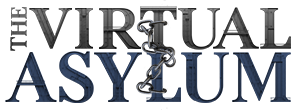Important Utensils (not counting measuring cup, I had those in the measuring section)
Note on material: Pyrex is a clear, glass-like material that expands less when heated than glass does, so it's better for use in ovens and microwaves
Saucepans: medium cylindrical pots, have a long handle on one side, come with lids. Usually come in 2-4 qt sizes. Often good to have 2-3 if you're making multiple things
Dutch Oven: large pot, has two short handles and a lid
Skillet: Shallow, flat pan with angled or curved sides. May have a non-stick coating on the inside, which requires certain precautions to avoid damaging it (see below)
Mixing bowls: Usually metal or glass; scraping a plastic bowl with a whisk or blender is a bad idea
Custard cups: Glass or pyrex, used for things like breaking eggs into
Whisk: A series of metal (or rubber-coated metal) loops, used for mixing ingredients together
Egg beater: A hand-cranked device that spins two metal bits, used for whipping cream, icing, eggs, etc. Honestly, an electric hand mixer is easier to use and does the same thing
Square pan: 9 in x 9 in, 2 in deep, pyrex or metal
Oblong pan: 13 in x 9 in, 2 in deep, pyrex or metal
Bread loaf pan: 9 in x 5 in, 3 in deep, pyrex or metal, used for making bread and meatloaf
Pie pan: Circular, pyrex or metal, often has a crimped edge to help shape the crust
Baking sheet (also called jelly roll sheet): 15.5 in x 10.5 in x .5 in, metal
Colander: Bowl with holes in it, plastic or metal, used for draining pasta and washed produce
Sifter: Wire mesh bowl with handle(s), put
Most useful kitchen knives: chef's (long, thick blade with the handle's axis set along the edge opposite the blade, used for chopping), bread (serrated blade, used for slicing exactly what you'd expect), paring (short, used for slicing fruits & vegetables), carving (long, thin, used for slicing meat)
Cutting boards: Plastic or hard wood preferred, soft woods can let juices from meat seep into the scoring and retain salmonella-laced fluids that transfer to the next thing you put on there. Attempting to use Tenma is not recommended.
Kitchen shears
Wooden spoon
Slotted Spoon
Potato masher
Tongs
Ladle: Deep spoon with long handle, used for transferring soups or skimming fat
Plastic scraper for cleaning
Scrub brush for cleaning
Big plastic dishpan for cleaning
Non-stick pan rules: Do not use cooking sprays like PAM (use oil or butter instead), do not preheat when empty, do not take heat above medium, do not scrub with abrasive sponge or cleaning pad, do not let knives or other sharp objects anywhere near it
If you get serious about cooking, you're going to want a stand mixer eventually for things like making dough. I recommend Kitchenaid, specifically the ones that lift the bowl rather than tilting the head.





